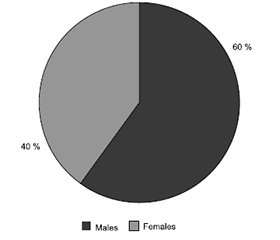Международный неврологический журнал Том 20, №3, 2024
Вернуться к номеру
Нервово-м’язове з’єднання при бічному аміотрофічному склерозі. Що ще треба знати?
Авторы: Sh. Vashadze (1), M. Kekenadze (2, 3), N. Kvirkvelia (4), M. Beridze (2, 3)
(1) - Batumi Shota Rustaveli State University, Batumi, Georgia
(2) - National Hospital for Neurology and Neurosurgery, London, UK
(3) - The First University Clinic of Tbilisi State Medical University, Tbilisi, Georgia
(4) - Petre Sarajishvili Institute of Neurology, Tbilisi, Georgia
Рубрики: Неврология
Разделы: Клинические исследования
Версия для печати
Актуальність. Бічний аміотрофічний склероз (БАС) викликає прогресуючу дегенерацію верхніх мотонейронів у корі головного мозку та нижніх мотонейронів у хребті. Крім того, незрозуміло, де починається дисфункція моторних нейронів і що викликає їхню дегенерацію. Це все ще є предметом дискусій. Матеріали та методи. Чи зустрічаються порушення нервово-м’язового зв’язку на ранніх стадіях БАС? Щоб відповісти на це питання, ми обстежили 5 пацієнтів із БАС (3 чоловіків і 2 жінки віком 50–61 рік) в Інституті неврології ім. Петра Сараджишвілі в 2018–2022 роках. Діагноз БАС ґрунтувався на клінічних ознаках, критеріях Gold Coast, результатах електроміографії (критерії Awaji), нейровізуалізації, аналізів крові та сечі. На ранній стадії захворювання спостерігалися лише асиметричний птоз і диплопія, які не покращувалися під впливом піридостигміну чи стероїдів. Результати. Вивчали анамнез пацієнтів, фізикальні дані, оцінювали психічні, когнітивні функції та неврологічний статус. Ми також опитували членів родини, оскільки пацієнту часто було важко точно описати симптоми. Антитіла до рецепторів ацетилхоліну були помірно позитивними лише в одного пацієнта. Тимому було виключено. При нейрофізіологічному дослідженні виявлено лише виражену недостатність нервово-м’язової передачі кругового м’яза ока, клінічних та електроміографічних ознак ураження мотонейронів не зафіксовано. Висновки. Приблизно через 2 роки у всіх п’яти пацієнтів розвинулися клінічні та електроміографічні ознаки БАС. У цьому дослідженні виявлено, що розлади нервово-м’язового з’єднання відіграють важливу роль у патогенезі БАС і можуть слугувати корисним раннім діагностичним маркером.
Background. Amyotrophic lateral sclerosis (ALS) causes progressive degeneration of upper motor neurons in the cortex, and lower motor neurons in the spine. In addition, it is unclear where motor neuron dysfunction begins and what causes motor neuron degeneration: whether it is the dying forward process or the dying back phenomenon where motor neuron degeneration begins distally at the nerve terminal or at the neuromuscular junction and progresses toward the cell body, is still a matter of debate. Materials and methods. Are there neuromuscular junction disorders in the early stages of ALS? To answer this, we described 5 patients with ALS presented at Petre Sarajishvili Institute of Neurology in 2018–2022, 3 males and 2 females aged 50–61 years. ALS diagnosis was based on clinical signs, the Gold Coast criteria, electromyography (Awaji), neuroimaging, blood and urine tests. At the early stage of the disease, only asymmetric ptosis and diplopia were noted, which did not improve on pyridostigmine or steroids. Results. We studied patients’ anamnesis, physical data, evaluated their mental, cognitive functions and neurological status. We have also interviewed family members, as it was often difficult for the patient to accurately describe the symptoms. Acetylcholine receptor antibodies were mildly positive only in one patient. Thymoma was excluded. The neurophysiological study showed only marked neuromuscular transmission failure in orbicularis oculi, there were no clinical and electromyographic signs of motor neuron damage. Conclusions. Approximately 2 years later, all five patients developed clinical and electromyographic signs of ALS. In the present study, neuromuscular junction disorders are found to play an important role in the pathogenesis of ALS and may serve as a useful early diagnostic marker.
бічний аміотрофічний склероз; розлади нервово-м’язового з’єднання; Грузія
amyotrophic lateral sclerosis; neuromuscular junction disorders; Georgia
Introduction
Material and methods
Results
/66.jpg)

